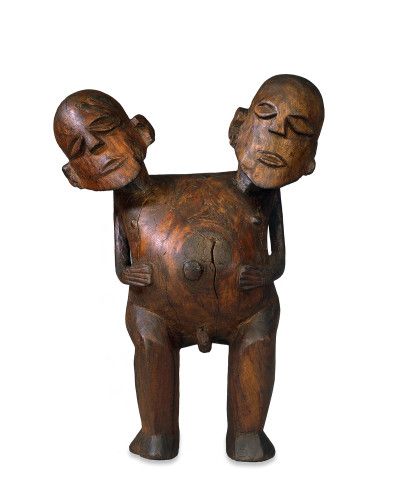Marking 250 years since Cook arrived in Oceania in 1768, the Royal Academy is displaying a collection of diverse artworks from across the South Pacific, from the time of Cook’s voyage in the 18th century up to contemporary Oceanian artists still working today.
The exhibition will explore the history of this region, its identity and the individual identities of each island nation; encounters and unions with other cultures through trade and exploration, and their artistic traditions. By following the history of Oceania from 1768 until today, we are able to follow the changes and continuities in the art and culture of this fascinating region.
When Cook arrived in Oceania, this region was unknown to Europeans, but it was a thriving collection of island nations trading and interacting with each other, with their own individual cultural practices and artistic techniques. These techniques would eventually also influence the art produced in Europe. However, the Royal Academy have been careful not to curate this exhibition from a European perspective, and have strived not to display any objects that have any issue of cultural sensitivity. Although the relationship between Oceania and Europe is often told through the objects, and many of the objects were collected by European voyagers, the RA have stressed that all of the artefacts on show were created by the indigenous people, so it is their side of the narrative that is being primarily told.
The exhibition will display over 250 artefacts from across Oceania, many of which have previously been unseen in museums in Europe for the past 100 years, and some of which have never been shown in public before. The collection will shed light on the inner workings of these societies in even more detail than before. One of the artefacts on show that has never been seen before is a 19th century long wooden bowl from the Solomon Islands depicting a crocodile with a human skull in its mouth, which is thought to have been used for either cannibalistic practices or marriage ceremonies, or possibly both.
As well as a variety of unseen historic bits and pieces, the exhibition will show modern Oceanian artists, such as the work of Maori and British artist Lisa Reihana. Reihana’s work is a panoramic video, re-telling Cook’s voyage and its consequences, with the aim of suggesting that the story is more probably more complex than the European ‘fabrication’.
The Royal Academy
Burlington House, Piccadilly, Mayfair, London W1J 0BD
Opening times
Monday – Sunday: 10:00 - 18:00
- Monday:
-
09:30 - 17:30
- Tuesday:
-
09:30 - 17:30
- Wednesday:
-
09:30 - 17:30
- Thursday:
-
09:30 - 17:30
- Friday:
-
09:30 - 17:30
- Saturday:
-
09:30 - 17:30
- Sunday:
- Closed

